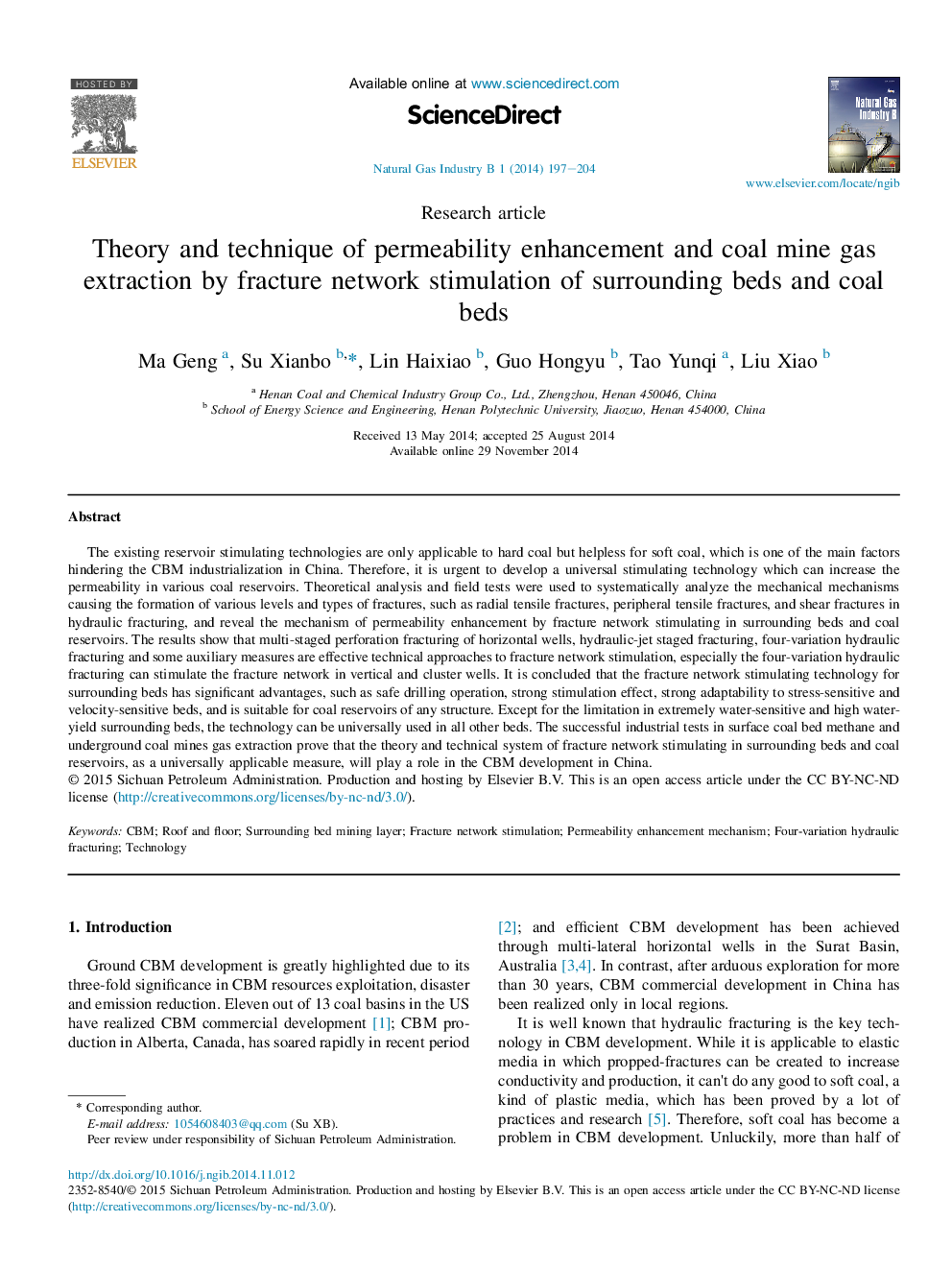| Article ID | Journal | Published Year | Pages | File Type |
|---|---|---|---|---|
| 1747870 | Natural Gas Industry B | 2014 | 8 Pages |
The existing reservoir stimulating technologies are only applicable to hard coal but helpless for soft coal, which is one of the main factors hindering the CBM industrialization in China. Therefore, it is urgent to develop a universal stimulating technology which can increase the permeability in various coal reservoirs. Theoretical analysis and field tests were used to systematically analyze the mechanical mechanisms causing the formation of various levels and types of fractures, such as radial tensile fractures, peripheral tensile fractures, and shear fractures in hydraulic fracturing, and reveal the mechanism of permeability enhancement by fracture network stimulating in surrounding beds and coal reservoirs. The results show that multi-staged perforation fracturing of horizontal wells, hydraulic-jet staged fracturing, four-variation hydraulic fracturing and some auxiliary measures are effective technical approaches to fracture network stimulation, especially the four-variation hydraulic fracturing can stimulate the fracture network in vertical and cluster wells. It is concluded that the fracture network stimulating technology for surrounding beds has significant advantages, such as safe drilling operation, strong stimulation effect, strong adaptability to stress-sensitive and velocity-sensitive beds, and is suitable for coal reservoirs of any structure. Except for the limitation in extremely water-sensitive and high water-yield surrounding beds, the technology can be universally used in all other beds. The successful industrial tests in surface coal bed methane and underground coal mines gas extraction prove that the theory and technical system of fracture network stimulating in surrounding beds and coal reservoirs, as a universally applicable measure, will play a role in the CBM development in China.
